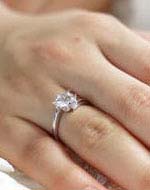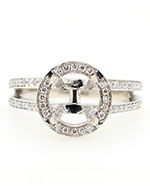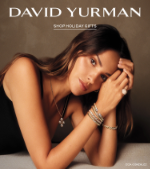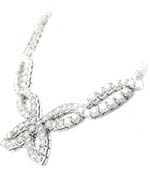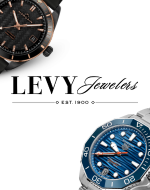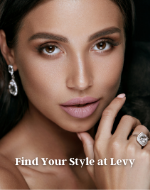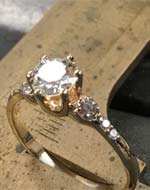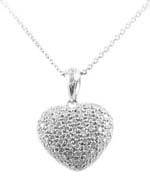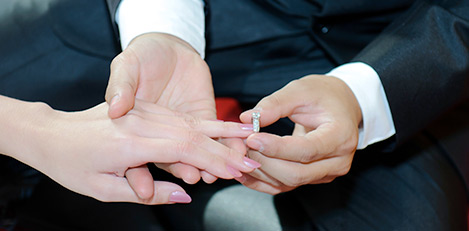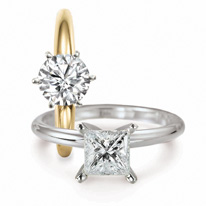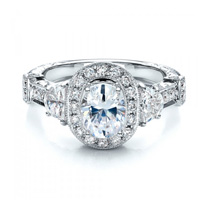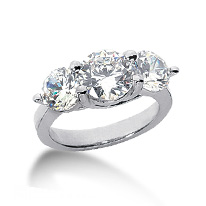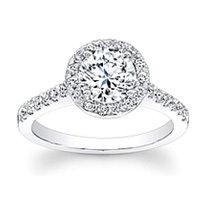- Jewelry
- Bridal
- David Yurman
- Vintage
- Vintage and Antique Rings
- Vintage and Antique Earrings
- Vintage and Antique Necklaces & Pendants
- Vintage and Antique Bracelets
- Vintage and Antique Pins
- Vintage And Antique Accessories
- Vintage and Antique Sterling Silver
- Vintage and Antique Gold Chains
- Estate Jewelry Buying & Selling Guide
- Pre-Owned Designer Handbags
- Vintage and Antique Watches
- Watches
- Designers
- Services
- Custom Work
- Special Offers
-


-
Home / Bridal Guide
Bridal Guide
- How to Start Shopping
- Jewelry Metals
- Ring Settings
- Diamond Shapes
The first step in engagement ring shopping should be the same no matter what sort of ring you want: set a budget. It doesn’t have to be an exact number, but give yourself a healthy, reasonable range. Don’t push yourself past the limits of what you can comfortably afford, but do remember that financing is always an option.
If you want to keep the proposal a surprise, you don’t have to discuss this with your partner, but be sure to consider their financial priorities, too. If she’s always fantasized about a lavish honeymoon, she may appreciate you spending a little less on the ring to afford the getaway of her dreams. On the other hand, she may have been dropping hints about a dream ring. The best course of action is always the one that will make both you and your partner the happiest.
When choosing the right metal for your engagement ring, be sure to take both aesthetics and durability into account. The vast majority of jewelry designers only make engagement rings from platinum or gold, precisely because these metals are both very durable. However, be careful which gold karat weight you choose. Pure, 24k gold is a soft metal, and not able to withstand daily wear.
You really can’t go wrong with 14k, 16k, or even 18k gold in terms of durability. But when it comes to color, the choice is entirely yours. Yellow gold is timeless and charming, with a warm glow and a chic, vintage appeal. White gold is a classic choice, and can enhance the perceived size and brilliance of your diamond. (Keep in mind, though, that many white gold rings need to be rhodium plated to keep their white color from dulling over time.) Rose gold is contemporary and romantic.
If you’re picking out a ring for someone, you may want to consider what metal colors she already wears. Take a peek at her jewelry box and see if her current rings, necklaces, and earrings are mostly white, yellow, or rose gold.
Platinum is an incredibly strong metal–even stronger than gold. Its white color is also brighter and longer-lasting than that of white gold. Because of this, it is more expensive than gold. However, if you have the money in your budget, platinum’s beauty and luster are undeniable.
There are so many engagement ring settings to choose from that you may feel overwhelmed at first. Spending some time browsing at Levy Jewelers will certainly help, but before you visit the store, check out a few of these popular engagement ring settings to help you get a better idea of what you want:
Solitaire: The classic ring setting, solitaire rings feature a single stone, front and center. This setting gives the center diamond the spotlight. If you’ve found an especially beautiful diamond to show off, or if you just like a classic, elegant look, then a solitaire setting is a great choice for you.
Two Stone or Three Stone: Two stone rings feature two stones, typically of the same size, but often in different shapes. Occasionally, one stone is a diamond and the other is a colorful gem. Three stone rings feature one center stone flanked by two other stones. Usually, they are smaller than the center stone, and may be different shapes or even different gems altogether. Multi-stone rings are unique, flashy, and hold special symbolism–the two-stone ring is said to represent each member of the couple coming together, while the three-stone ring is said to represent the couple’s past, present, and future.
Halo: In a halo setting, small diamonds encircle the face (top) of the center stone. This gives the appearance that the center stone is even larger and sparklier than it already is. It’s a great option for brides who want to go big on brilliance.
Hidden Halo: In a hidden halo setting, the diamonds circle the bottom of the center stone (called the culet) rather than the face. This adds some extra dimension to your diamond’s sparkle, while being subtler than a traditional halo setting.
Pavé: Another way to add some extra sparkle, pavé settings feature small, closely set diamonds along the ring band. It accentuates the center diamond and adds a bit of extra brilliance.
Bezel: In a bezel setting, the center diamond is cradled within a metal cup. It’s a very secure setting, as the lip of the cup holds the diamond snugly in place. The bezel setting also has a charming, vintage look, and it can even make the diamond look larger by emphasizing the face. The bezel setting has been popular in the past, but it’s also very trendy now, and for good reason!
Your bride may have dropped hints about what diamond shape she wants. After all, few things have as big an impact on an engagement ring as the shape of the center diamond. But even if she hasn’t given you any suggestions, you can probably narrow down your options by thinking carefully about her tastes and preferences.
Round diamonds are perfect for brides who love the classic look. They are the most popular diamond shape for a reason! And even though they’re the traditional choice, you can still give a round diamond some contemporary flair with a unique setting, like a halo or three-stone setting. Princess cuts, which have a square face, are currently the second-most popular diamond shape. They’re a great balance of modern edge and classic elegance. The only thing to keep in mind with a princess cut is that its sharp corners may catch on fabrics, and they are more prone to chipping than diamond shapes with rounded edges. You can solve this problem by making sure you choose a protective setting for the diamond.
Elongated diamond shapes, like oval, pear, emerald, and marquise shaped diamonds, have a few fascinating visual effects. For starters, they have a larger surface area than round diamonds, which makes them appear bigger than their actual carat size. If the size of the diamond is important for your bride-to-be, she may appreciate an elongated shape. These shapes are also great for flattering the finger. They make the wearer’s finger, and even the whole hand, look longer and more slender. If this is something your bride might like, consider an elongated diamond shape.
What Setting Makes Sense?
Use this space to save the products you like. To add a product here, simply click the icon.

